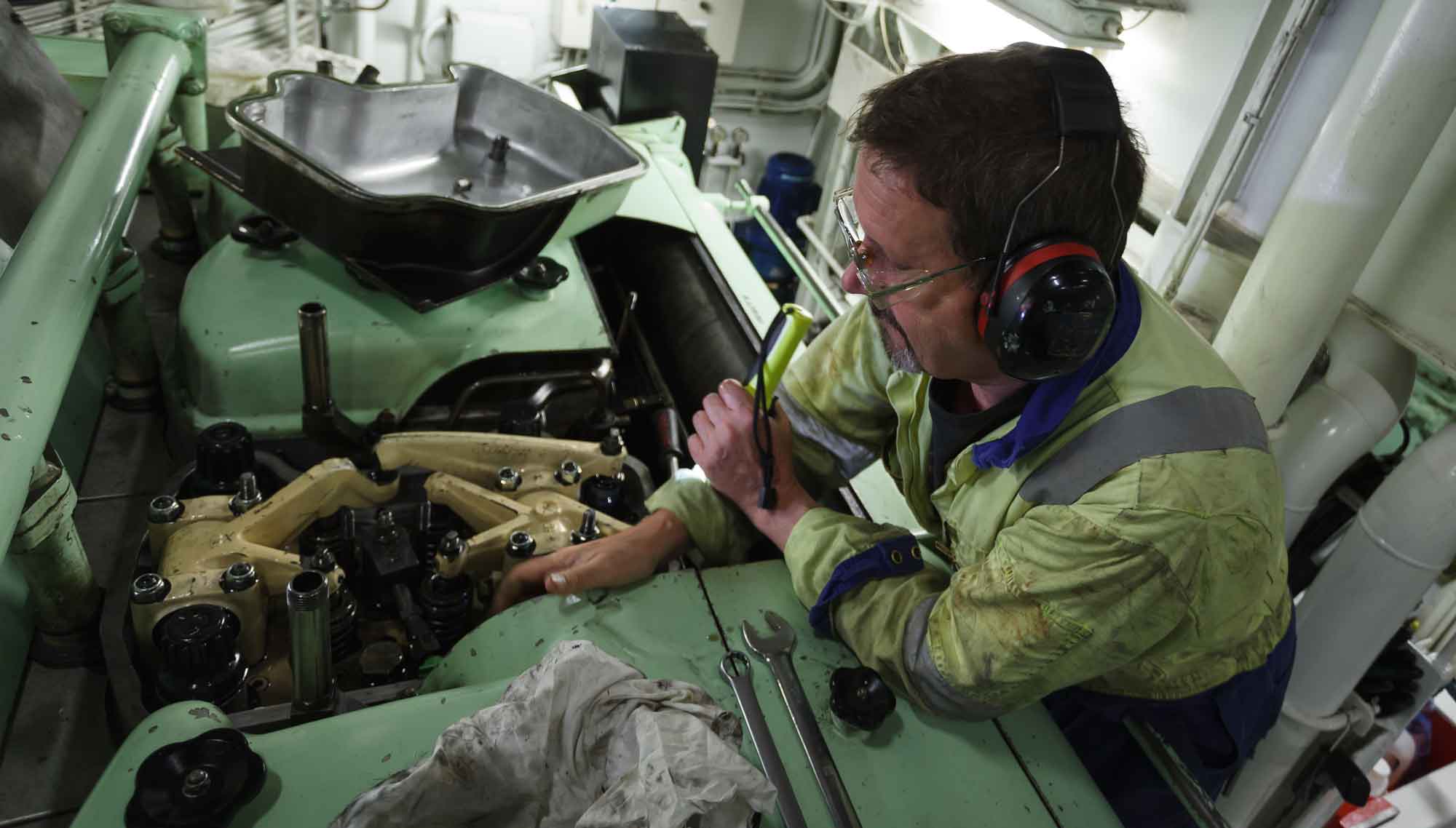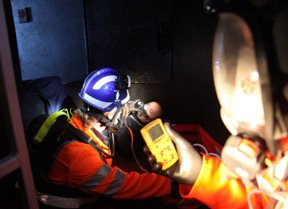
City of Glasgow College has developed a pioneering programme of blended learning to teach seafarers about the dangers of oxygen depletion
In February 2018, the aggregates carrier, Sumiei, docked at Banjarmasin Port in Indonesia. Four port workers entered the cargo hold shortly after the hatches were opened. They didn't re-emerge. A port paramedic went in after them and was overcome. All five were taken to hospital. They were found to have died from lack of oxygen.
Year on year seafarers die from entering enclosed spaces depleted of oxygen. This can be caused by rusting steel, but also by a wide variety of cargos such as wood, coal or grains.
It's not something new. As far back as the 1960's the UK Department of Transport issued guidance on entering 'dangerous spaces'.
Despite safety campaigns, and an increased awareness, seafarers continue to enter spaces unprepared or become a casualty when attempting to rescue a stricken shipmate.
In 2018 the college's STEM & Innovation team received funding from the Maritime Education Foundation (MEF) to develop a pioneering programme of blended learning to teach seafarers about the dangers of oxygen depletion.
Developing the course was part of a wider research programme by Dr Manhal Alnasser, a lecturer in professional maritime engineering at City of Glasgow College, together with consultant marine engineer, Daniel Burke, former principal of Cork College in Ireland. The research aims to determine the rate of oxygen depletion in confined spaces that are typically found on-board ships.

Dr Alnasser explains: 'Our research investigates how quickly an oxygen depleted atmosphere is created in models that simulate different situations aboard a ship, eg a cargo hold or a chain locker. We demonstrated for the first time that it is significantly faster than previously thought and now have clear figures for how fast a dangerous space is created.'
These findings have now been published in the Journal of Marine Engineering & Technology.
Dr Linus Reichenbach, project manager for Innovation & STEM at City of Glasgow College, with responsibility for managing both research and course development, said: 'It is an invisible danger. Oxygen depletion has no smell, no alarm, to warn people off. In an enclosed space, you will be unaware you are not breathing oxygen, because you will still be able to take a breath. We want to make sure seafarers have the knowledge and awareness they need to avoid putting their lives at risk.
'The online course we have developed aims to raise awareness of the dangers. We want seafarers, regardless of the vessel type they work on, to understand that a situation which may look safe, may not be. Basing our course on peer reviewed research adds credibility and a new dimension to visualise the dangers to students.'
We want seafarers, regardless of the vessel type they work on, to understand that a situation which may look safe, may not be Dr Linus Reichenbach, project manager for Innovation & STEM at City of Glasgow College
Dr Alnasser points out that oxygen depletion can occur in any enclosed space as well as spaces adjacent to an enclosed area.
'We also researched adjacent spaces and found that when the oxygen level drops in an enclosed space such as a cargo hold, it can also affect adjacent stairwells and passageways. It is really alarming, and the course includes real life examples to demonstrate the dangers to students.'
The research being carried out by City of Glasgow College, while driving education, has potential implications for the wider industry in the future. It is supported by an industry steering group comprising Captain Kevin Slade, former chair of the Merchant Navy Training Board (MNTB), Gareth Mathias from Clyde Training Solution, and Neville Jayant from SeaTec UK Ltd.
'Our aim is to ensure those who are new into the industry learn about oxygen depletion from the beginning. We hope our research will change the ways entering enclosed spaces is taught, and we hope that ultimately our research and teaching materials will influence the International Maritime Organization (IMO) guidelines,' explained Dr Reichenbach.
Dr Alnasser said: 'We took the project from early stage investigations, involving basic manometers and models made of pipes, to bespoke equipment and high-level sensory technology to ensure accuracy.'
The oxygen depletion course has now been rolled out through an online learning platform in order to reach a wider audience. The course is currently under consideration for recognition by MNTB.
'It is free and accessible to all and includes a detailed overview of our research results. Ultimately it is 90 minutes that could save lives,' said Dr Alnasser.
Tags
